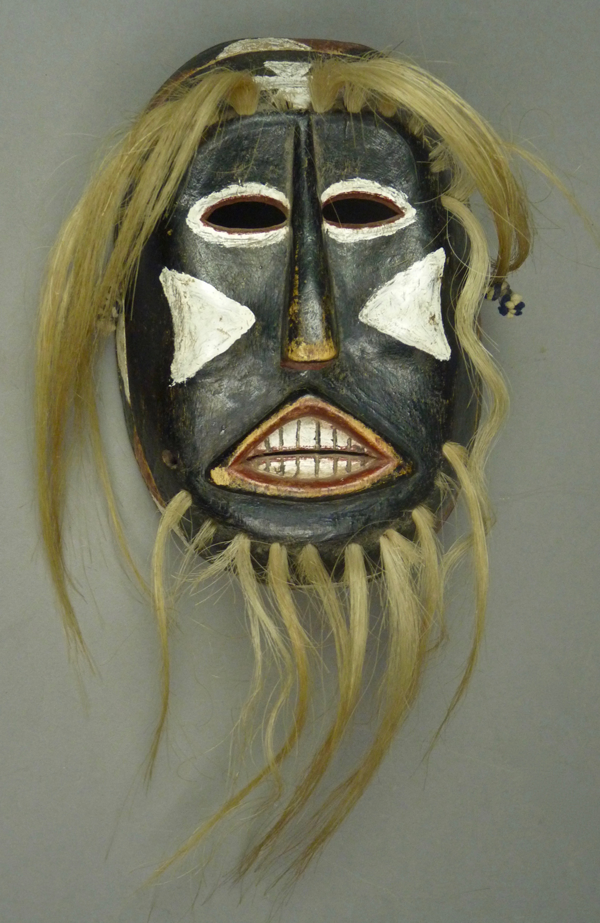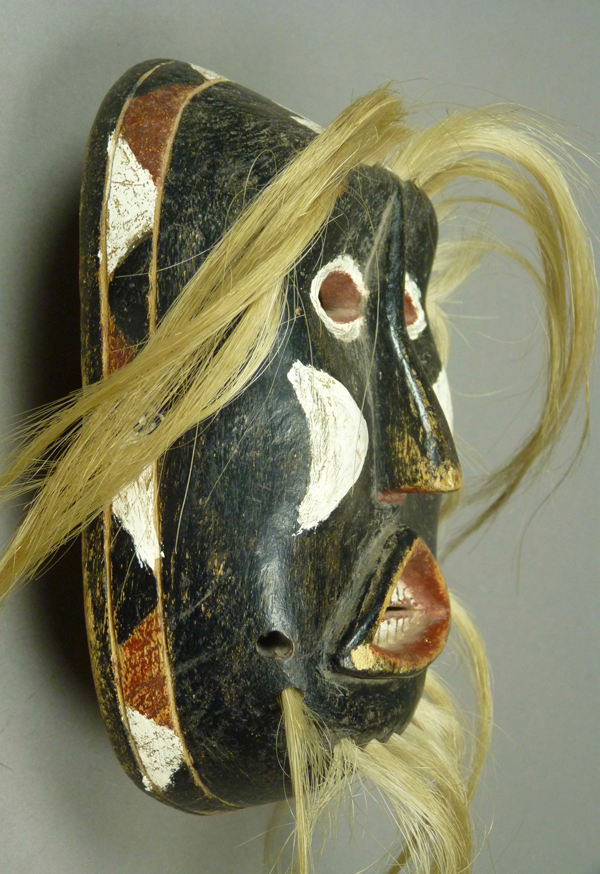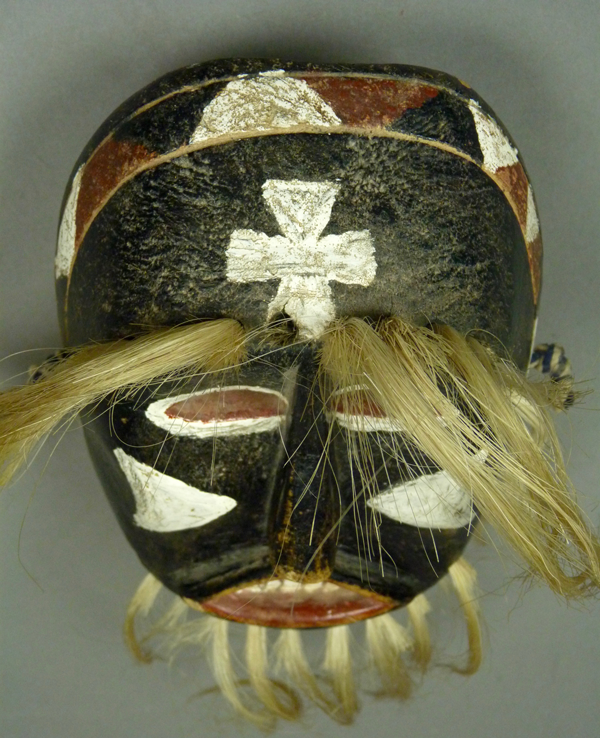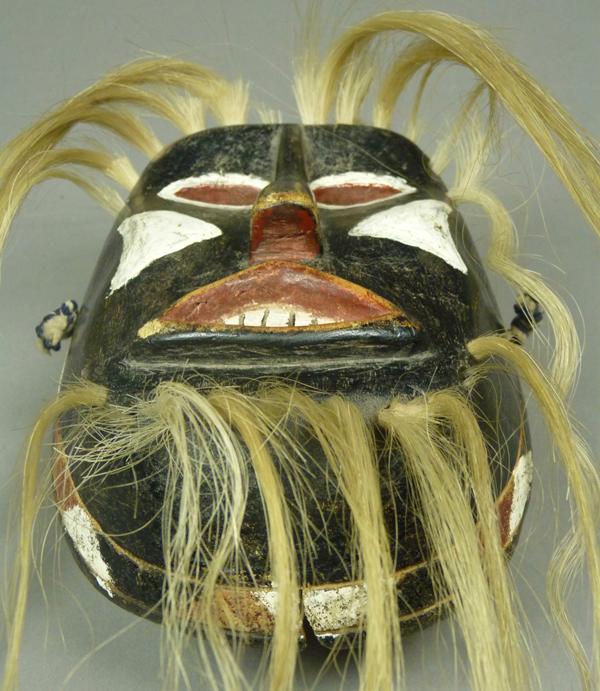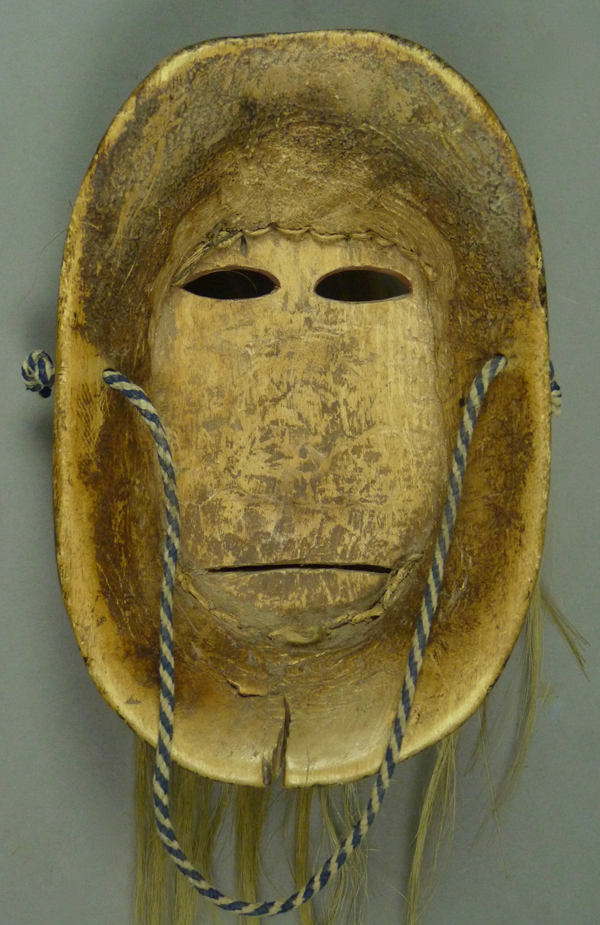Last week I shared images of a Fariseo mask from Queretero. With that post, I completed my review of the masks and related material in my collection. After a little more than five years of weekly posts, I have almost no more material to introduce you to.
As it happens, I recently bought another Rio Mayo mask that is worth sharing today.
After this post I will only have more to tell about Mexican masks if I buy another, or if you send in your questions, comments, or photos, so I welcome any correspondence like that. In the absence of such new material (provided by either you or me), I will maintain this page as a Mexican Dance Masks information resource center, an encyclopedia of sorts.
Here is my latest arrival.
I bought this mask on the basis of a frontal photo like the one just above. I was most impressed by the triangular tubular mouth, which reminded me of mid-century Yaqui masks I had seen, and so I thought this was probably a Yaqui Pascola mask. To my surprise, when I held the mask in my hands I realized that this was a mask from the Rio Mayo area. It has the typical shape of masks from that region. Of course I wondered who might have carved this mask.
I had studied the mask’s other features when I looked at the initial photo. I particularly noted that the nose had an unremarkable shape from the front, but of course I was looking from the perspective that I thought this was a Yaqui mask. Now let’s look at that nose from a side view, and within a Rio Mayo perspective..
From the side, this nose has an elegant profile, and one that I know well. Together the front and side views reveal the classic nose design used by Plácido Alamea, a Rio Mayo master carver from the early and middle decades of the 20th century. I wrote about his masks in my post of 10/08/18, noting that Donald Cordry had included in his book (Mexican Masks, page 101, plate 140) a photo of Don Plácido carving a Pascola mask in 1938. The link to that post follows.
https://mexicandancemasks.com/?p=13258
In that post I explained that there are also other design details that can identify Plácido’s work, when present. For example, although most Rio Mayo Pascola masks have relatively flat cheeks, those of Placido tend to be inflated or arched (convex). In the side view we find this feature as well—the areas under the white painted triangles on the cheeks have round elevations.
Plácido usually constructed his rim deigns within inscribed lines that functioned as borders, and we also see this in the side view and the top view that follows. On the other hand, his typical pattern of parallelograms alternating with triangles within these guidelines is absent, or perhaps no longer visible, because this is an old mask that has probably been repainted more than once.
The forehead cross has certainly been repainted.
This chin view reveals the depth of the triangular tube of the mouth.
This mask is 7¾ inches tall, 5 inches wide, and 2½ inches deep.
This back of this mask is very darkly stained, as if it had been danced for decades.
Next week I hope to have more interesting masks to show you, but that will depend on one of you.
Bryan Stevens

